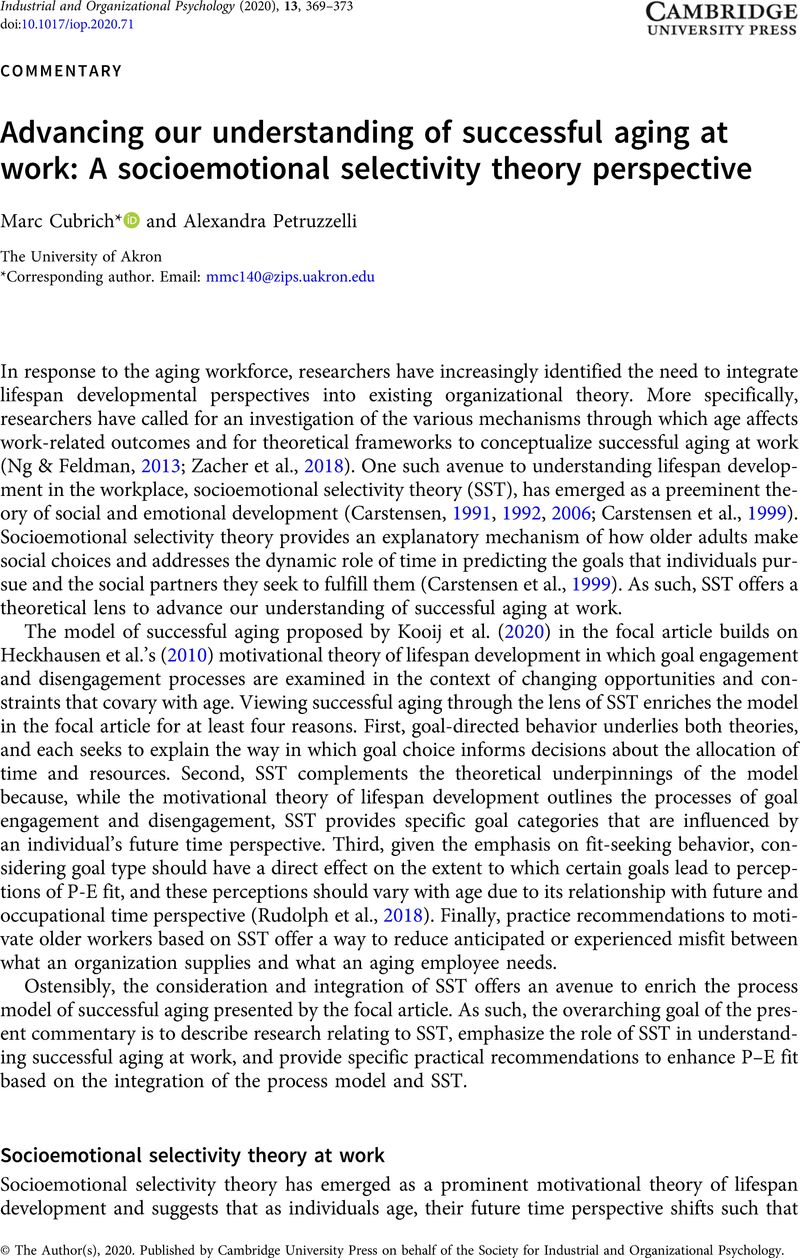Crossref Citations
This article has been cited by the following publications. This list is generated based on data provided by Crossref.
Ma, Huajun
and
Zhao, Chenhui
2023.
Family-Work Conflict and Successful Aging at Work of Employees in Manufacturing Enterprises in North China.
Psychology Research and Behavior Management,
Vol. Volume 16,
Issue. ,
p.
3973.
Karanika-Murray, Maria
Van Veldhoven, Marc
Michaelides, George
Baguley, Thom
Gkiontsi, Dimitra
Harrison, Natalie
and
Truxillo, Donald
2024.
Curvilinear Relationships Between Age and Job Performance and the Role of Job Complexity.
Work, Aging and Retirement,
Vol. 10,
Issue. 2,
p.
156.
Taneva, Stanimira K.
and
Peng, Yisheng
2024.
Fostering successful ageing at work: The role of cognitive job crafting, work certainty and perceived remaining time at work.
Journal of Occupational and Organizational Psychology,
Vol. 97,
Issue. 2,
p.
381.
Tomova Shakur, Teodora K.
North, Michael S.
Berson, Yair
and
Oreg, Shaul
2024.
The age of leadership: Meta‐analytic findings on the relationship between leader age and perceived leadership style and the moderating role of culture and industry type.
Personnel Psychology,
Vol. 77,
Issue. 4,
p.
1403.
Hu, Minqiao
Wu, Xiongfu
and
Qiu, Shuang
2024.
Life Satisfaction Among Chinese Aged Workers: Interplay of Organizational Justice, Workplace Emotions, and Subjective Age Perception.
Psychology Research and Behavior Management,
Vol. Volume 17,
Issue. ,
p.
23.
Pandey, Suruchi
Chanda, Ruby S.
and
Bhoyar, Pravin Kumar
2024.
‘Too early to sit back and play golf’: veterans’ perspectives for second career.
Cogent Social Sciences,
Vol. 10,
Issue. 1,
Ferguson, Lorena A
Harikumar, Amritha
Leal, Stephanie L
and
Scheibe, Susanne
2025.
Retirement through rose-colored glasses: greater positivity bias in retired relative to working older adults.
Work, Aging and Retirement,
Vol. 11,
Issue. 2,
p.
162.



